If you ever want to start a riot in a mushroom community, ask what the best mushroom harvesting method is — should they be pulled up or cut? Folks get riled up! It’s a question a lot of people have, with good reason. The underlying issue is about the overall health of the mushroom patch, People want to know and care deeply about which method causes the least harm to the underground mycelium (the mushroom’s “roots”). And people have very big feelings around the right way to pick mushrooms.
Some of this confusion is based on mushroom ‘knowledge’ passed through the generations. For many people, their grandpa or auntie or friend who has been foraging mushrooms for a very long time told them one way or the other, and now it is an indisputable fact to them. How their longtime foraging relative or friend concluded the best method is anyone’s guess. But now it is tradition, and it can be very hard to move away from tradition.

This forager suspects people like to have rules and also to set rules, whether they’re based on any concrete evidence or not. And so, over the years, different camps have emerged with some saying mushrooms should only ever be pulled because cutting invites bacteria into the remaining stem and therefore, the mycelium. While at the same time, the other side says cutting is the only way to harvest mushrooms because it doesn’t hurt or touch the underground mycelium.
So, which method is actually the right one for mushroom harvesting? Should we all be pulling up our mushrooms or cutting them at the stem base? There are some studies available now that provide valuable insights into the issue. Let’s dive in and talk mushrooms, science, and the truth about the best way to forage wild fungi.
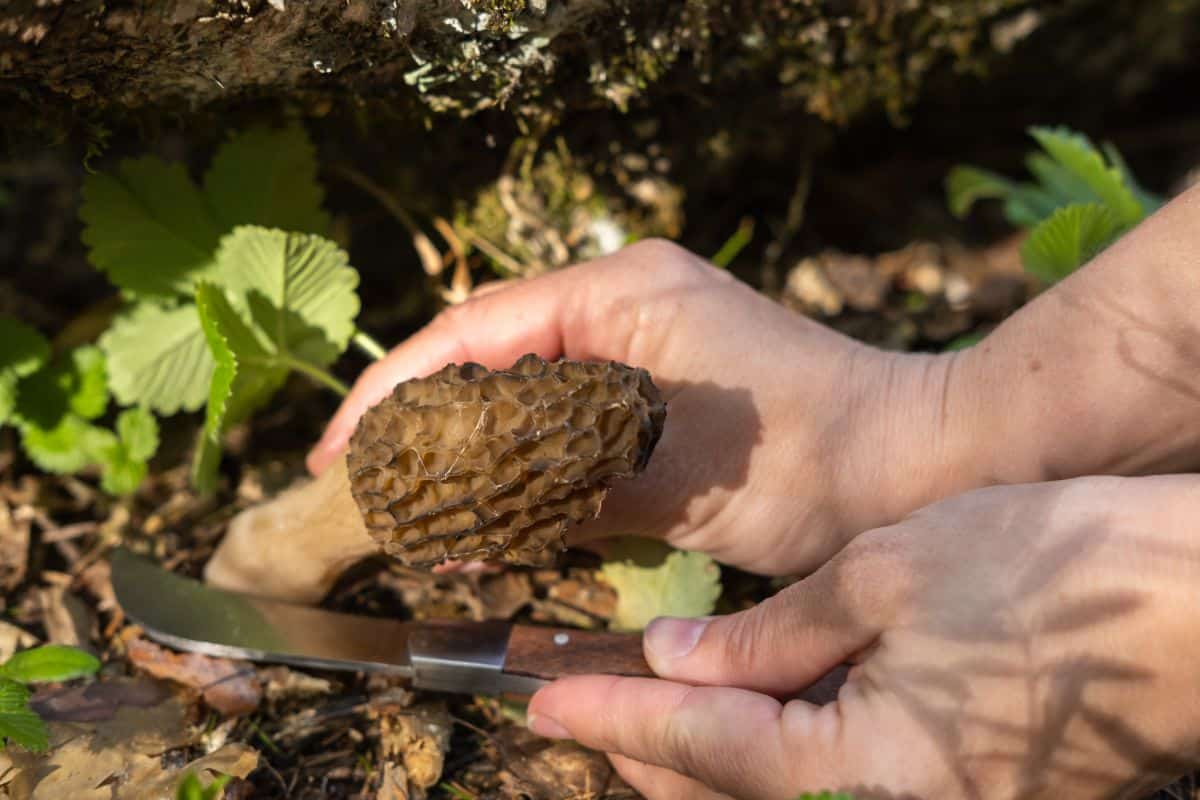
Jump to:
- The Pull vs. Cut Debate: What’s the Fuss?
- How Mushrooms Grow and Reproduce
- Do mushrooms grow back after you pick them?
- What the Research Really Says
- What Really Affects Mushroom Populations
- Best Practices for Picking Wild Mushrooms
- The Real Threats to Mushroom Populations
- Ending The Debate (Hopefully)
- Common Questions About Mushroom Harvesting
The Pull vs. Cut Debate: What’s the Fuss?
The mushroom harvesting community has split into two distinct groups. Some swear by pulling mushrooms straight from the ground. Others believe cutting is the only responsible way to do it. This split runs deeper than you might expect, with passionate supporters on both sides claiming their method works best for future harvests. And often getting quite riled up in their debates.
But why do foragers care so much? It seems a small detail, so why is it so talked about and so divisive? Most foragers spend a lot of time in the woods hunting mushrooms, and because of this, they build deep connections with their harvesting spots. Once a good mushroom patch is found, foragers want to ensure mushrooms continue to grow there year after year. On top of that, good foragers want to minimize their environmental impact while enjoying what they do.
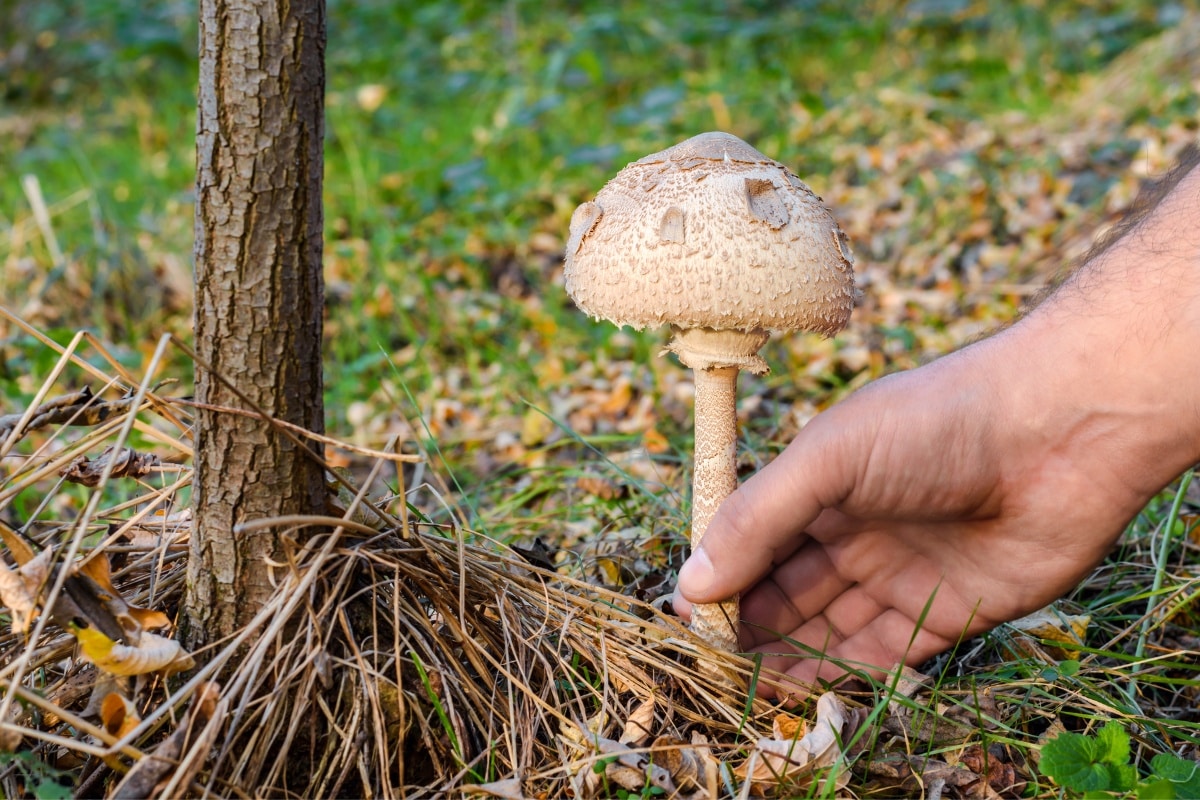
The Mushroom Harvesting Arguments:
| Argument For | Argument Against | |
| PULL | It is more natural since this is how animals like deer and squirrels harvest them. Plus, if you are trying to identify the mushroom, often times you must pull up the mushroom to see the details of the stem base. | Pulling the mushrooms out of the ground is too forceful and potentially rips up and damages the underground mycelium (which the mushroom is attached to). |
| CUT | Harvesting doesn’t touch the mycelium. Plus, cutting off the base of the stem means a cleaner harvest (less dirt to be transported home) | Left behind cut stems can invite bacteria and infection into the underground mycelium . |
Many people have picked mushrooms from the same spots for decades. This is no small thing. A mushroom patch can produce mushrooms indefinitely as long as it has all the nutrients it needs and is respected. Foragers who have been mushroom hunting for a long time feel strongly about their methods. Mostly because whichever method they’re using is working, and so there is no moving away from it.
If you tell a longtime forager their technique might hurt future yields, they’ll get defensive. And, this leads to the often angry, vitriol arguments on social media.
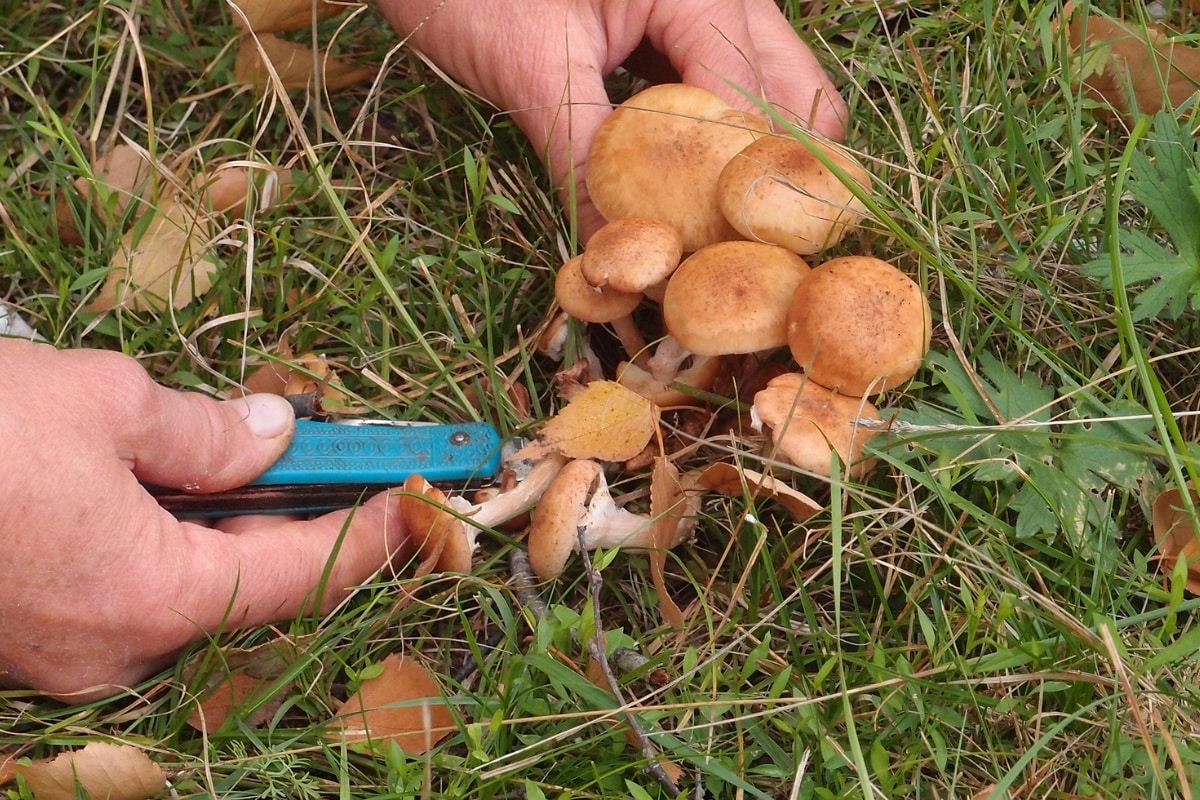
Common Myths and Assumptions About Mushroom Harvesting
The heated debate hasn’t stopped misconceptions from spreading on both sides. People who promote cutting say pulling damages the mycelium – the underground network from which mushrooms grow – and leads to smaller yields. Those who pull argue that leftover stems can rot and cause bacteria to get into the underground mycelium.
Both sides usually base their claims on what they’ve seen rather than actual studies. This is a very important point — everyone who chooses a side is basing it on anecdotal evidence. They are not basing their choice on science, studies, or research; it is all personal experience. Or, in many cases, simply lore passed on without any follow-up investigation.
One popular myth suggests pulling up mushrooms creates holes in the ground that damage the mycelium and reduce growth. The other side thinks that cut stems left behind might attract parasites or competing organisms that could infect and hurt the underground mycelium.
The truth is, there is no evidence for either claim being true (or false, for that matter). There is no evidence cut mushrooms invite bacteria or parasites into the mycelial structure. And, there is no evidence pulling up the mushrooms causes harm to the mycelium, either.
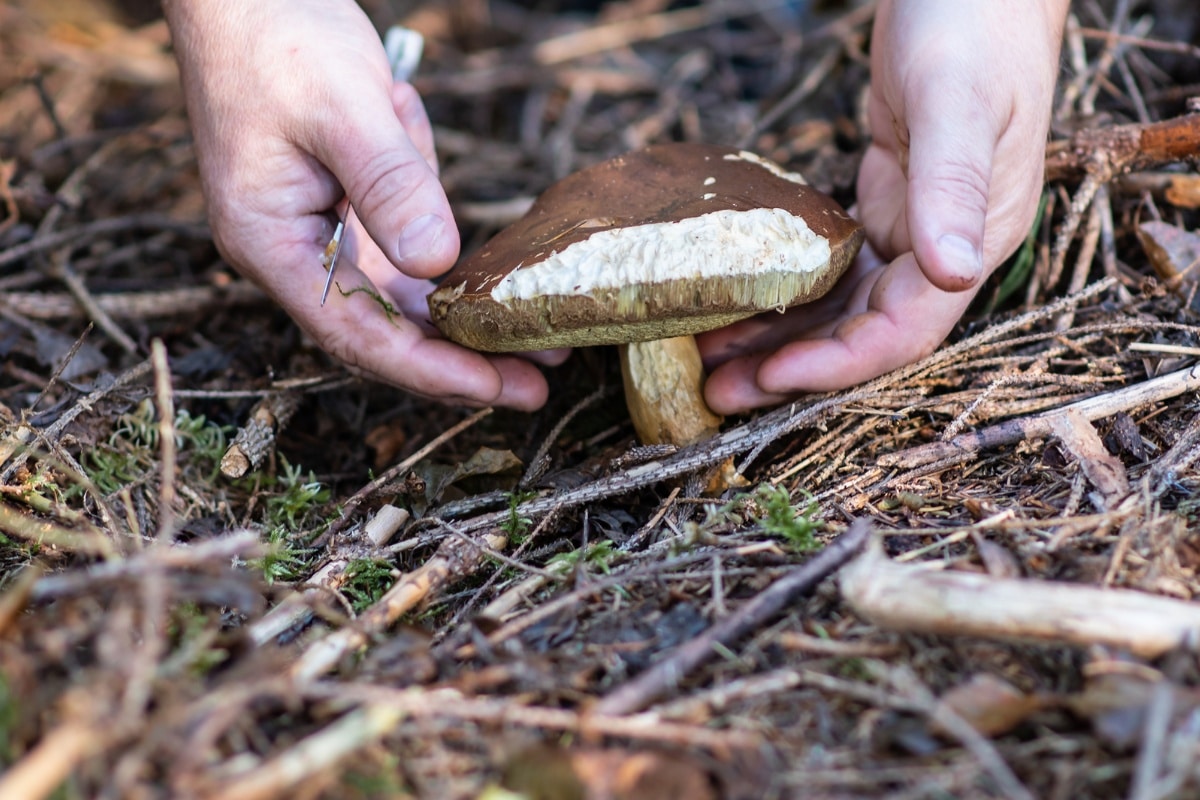
Common Claims on Social Media
Online mushroom groups often burst into lively debates about these mushroom harvesting methods. Look through any foraging forum, and you’ll find threads with hundreds of comments. People argue passionately about whether cutting beats pulling.
Social media often makes these discussions bigger than ever. Some foraging groups run polls about preferred methods to get a lively debate going. And, the comment sections fill up with personal stories rather than scientific facts. Many popular foraging influencers, for some reason or another, usually pick one side and dismiss the other completely.
Seasoned foragers sometimes point out that this whole debate misses the point. They remind people that forest health, weather conditions, and not taking too many mushrooms matter way more than how you pick them. Still, the cutting versus pulling argument remains one of the most heated topics among mushroom hunters.
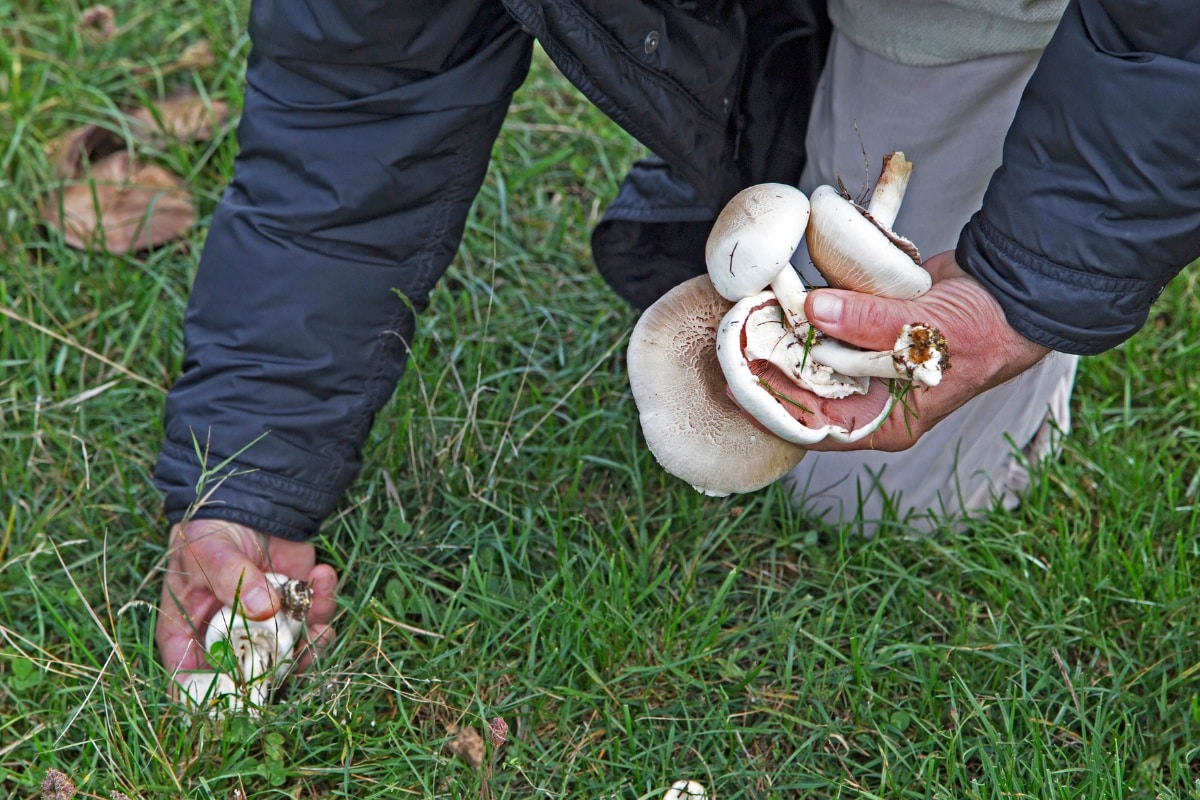
How Mushrooms Grow and Reproduce
One way to better understand which mushroom harvesting method is best is to understand how mushrooms grow. Mushrooms grow in a way that’s very different from plants, and learning how they grow helps us understand how they should be picked.
Mushrooms share more similarities with animals than plants. Their lifecycle has four stages: spore germination, colonization, fruiting, and spore release. The cycle starts when tiny spores find the right conditions with enough moisture and nutrients. These spores then germinate and create thin, thread-like structures called hyphae.
The hyphae spread out and create a network called mycelium, which is basically the fungus’s “body.” This mycelium works like an inside-out stomach and secretes enzymes that break down organic matter around it. The mycelium can survive for months, years, and even centuries as it quietly expands underground or within its growing medium.
The mycelium creates fruiting bodies—the mushrooms we see—when specific environmental conditions line up (usually changes in temperature, humidity, and light). These mushrooms are actually just reproductive structures of the mycelium. They exist to release thousands of spores to keep the lifecycle going.
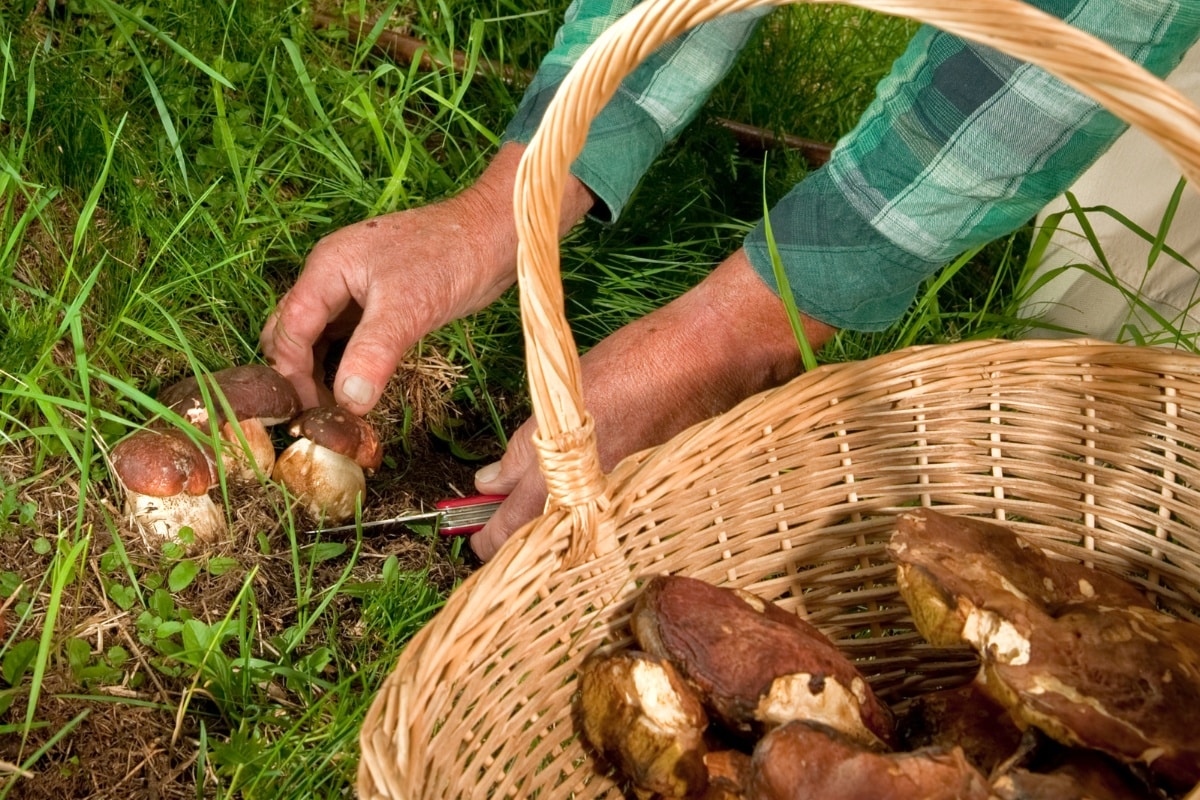
Do mushrooms grow back after you pick them?
Because you are only picking the fruiting body, the reproductive structure of the fungus, harvesting them does not hurt the main mycelium body. The fungus will fruit again when the conditions are right and it is ready to release more spores. However, they will not return the same year (usually) or grow from an already harvested fruiting body.
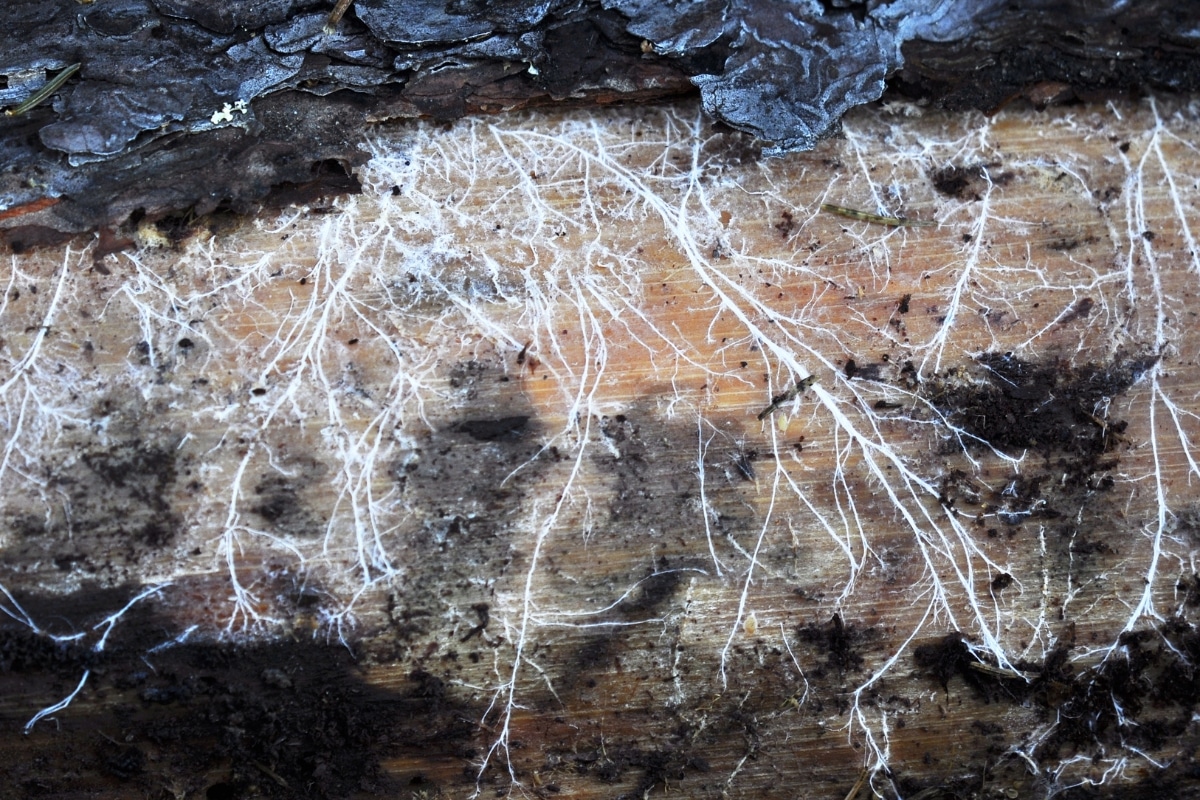
Mushrooms will reappear in the same location year after year, but this is different from “growing back.” Growing back implies that if you harvest half of a chicken of the woods, more will fruit or grow where you harvested. Mushrooms don’t work like that. Once the fruiting body is removed, that is it for that specimen that year. Other fruiting bodies might appear nearby or even from the same log, but they will be separate from the already harvested one.
When harvesting mushrooms, we only pick the fruiting body, not the whole organism. The mycelium stays safe underground or in its growing medium, just like an apple tree remains standing after being picked.
Most varieties can produce several crops or “flushes” after the first harvest, sometimes giving a second or third crop. The mycelium stays alive and creates new fruiting bodies whenever conditions are right. This is different from regrowing or growing back, though. Each flush is its own unique thing, pushed forth by the mycelium body.
Think of how a tomato plant creates new fruit over time, continuously, and when you pick one, more still grow. But a new tomato isn’t going to regrow from where you removed the one. If the plant wants to produce more, it will fruit them from other stems, not regrow them. That’s how mushrooms work, too.
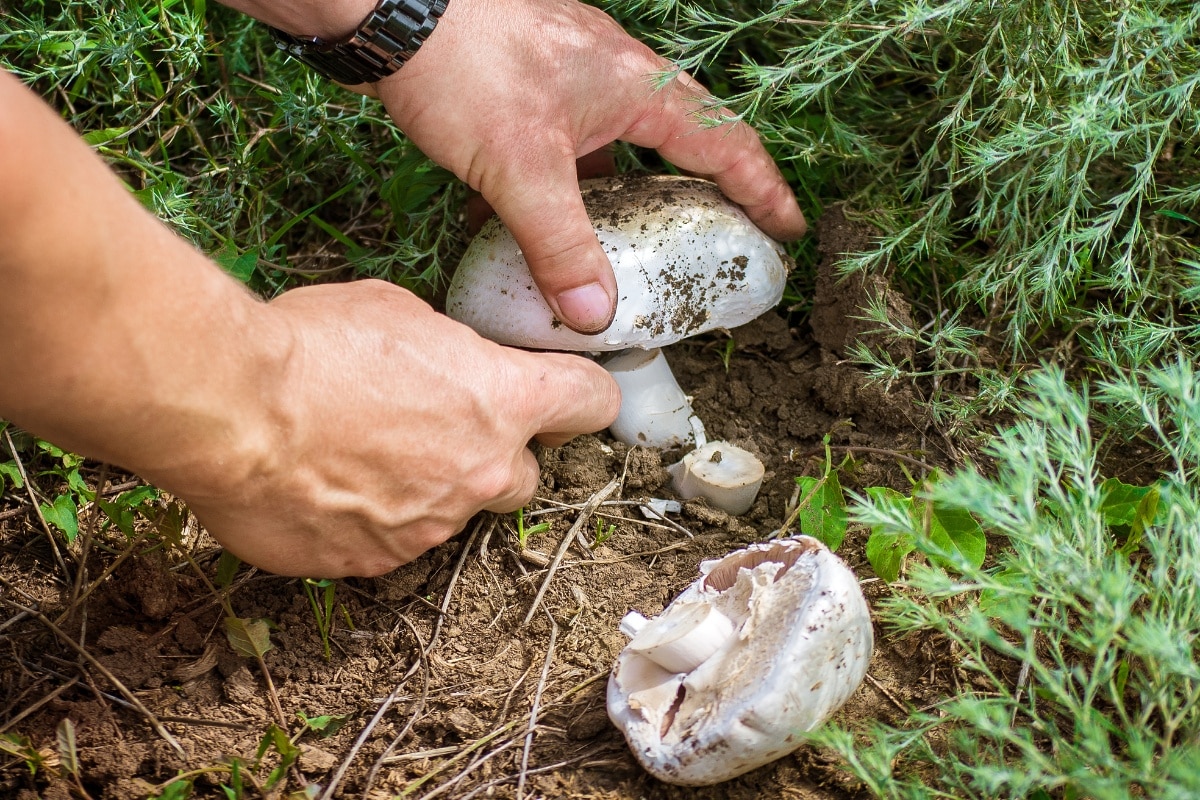
Tons of mushrooms can emerge from one patch of underground mycelium. Once each mushroom is picked, though, that’s it. A mushroom will not regrow from a cut stem like lettuce does. More mushrooms might emerge over time in the same spot, though. Removing it won’t hurt the organism much as long as you don’t disturb the mycelium.
The importance of spore dispersal
Spores are like seeds and are crucial to reproduction. A single mushroom releases tens of thousands of spores when it reaches maturity. The spores travel by wind, water, or animals to new places, and hopefully, they create new patches.
Spore dispersal helps fungi find new habitats and expand their territory. It also aids gene flow between fungal populations, which keeps genetic diversity healthy and lets them adapt to environmental changes.
Picking mushrooms after they’ve released some spores helps ensure they can reproduce. This happens as mushrooms mature—when their caps flatten or curve outward and their gills or pores get bigger. At this point, the mushroom has done most of its reproductive job.
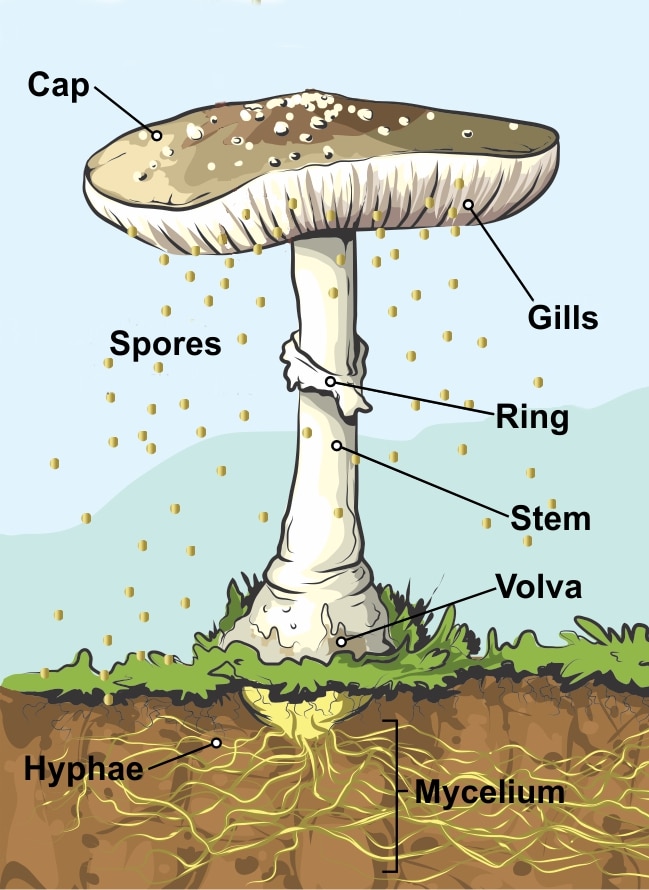
What the Research Really Says
Recent scientific research cuts through all the noise of personal stories about mushroom harvesting methods.
The Swiss Study
The most complete research on this topic comes from a groundbreaking Swiss Study that ran from 1975-2003. This nearly three-decade research project looked at whether different harvesting techniques affected future mushroom yields. The Swiss Study looked at more than 500 species— collecting data on every single one for over 30 years.
A part of their research was to only cut or pull mushrooms from different patches, to see if there was any difference in long-term health or yield of the site. The researchers found that “Over the 27-year duration of the study, no different trends in fruiting body production were detected between the harvested and non-harvested sites, irrespective of the harvesting technique deployed.“
The conclusion from this study is that it doesn’t matter whether you pick, pull, or cut the mushrooms. The mushroom harvesting method did not impact yields either way.
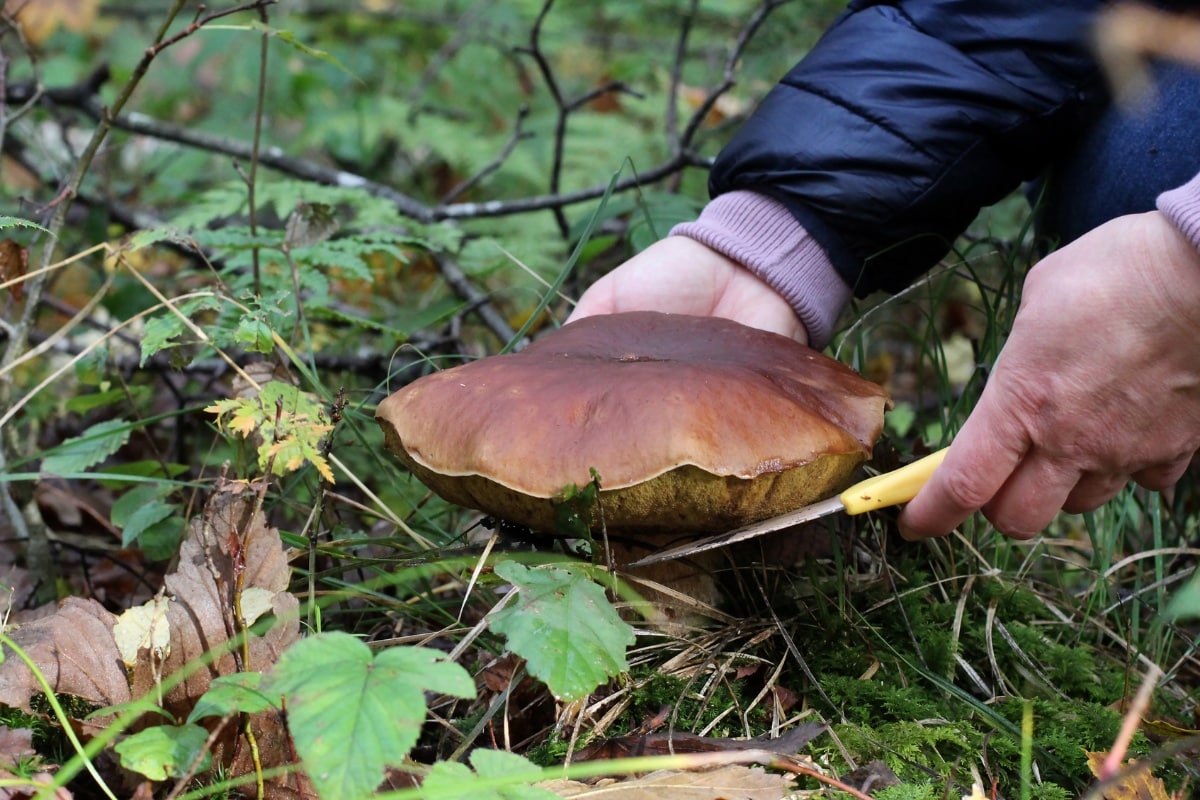
Oregon Chanterelle Study
In North America, the longest ongoing study to find out the long-term effects of heavy mushroom harvesting has been done by the Oregon Mycological Society (OMS). Since it started in 1986, the Chanterelle Project has looked at 10 areas where chanterelle mushrooms grow in the Mount Hood National Forest in Oregon. In this study, every mushroom is picked, its location in the area is noted, and all samples are dried, labeled, and stored for future research. The Cantharellus Project also gathers information, including data on areas where all mushrooms are cut with a knife and areas where mushrooms are only pulled from the ground.
The results of this long-running study show that in plots where all the mushrooms were cut, yields went down very, very slightly over time. And, in plots where mushrooms were harvested by just pulling them out, yields actually increased slightly. Neither of these amounts, though, was significant enough to determine whether one method is unequivocally better than the other.
The choice to harvest by cutting with a knife or pulling them from the ground seemed to make little difference in any sizeable way. Like with the Swiss study, this research suggests that fungi reproduce well, whatever the harvesting method.
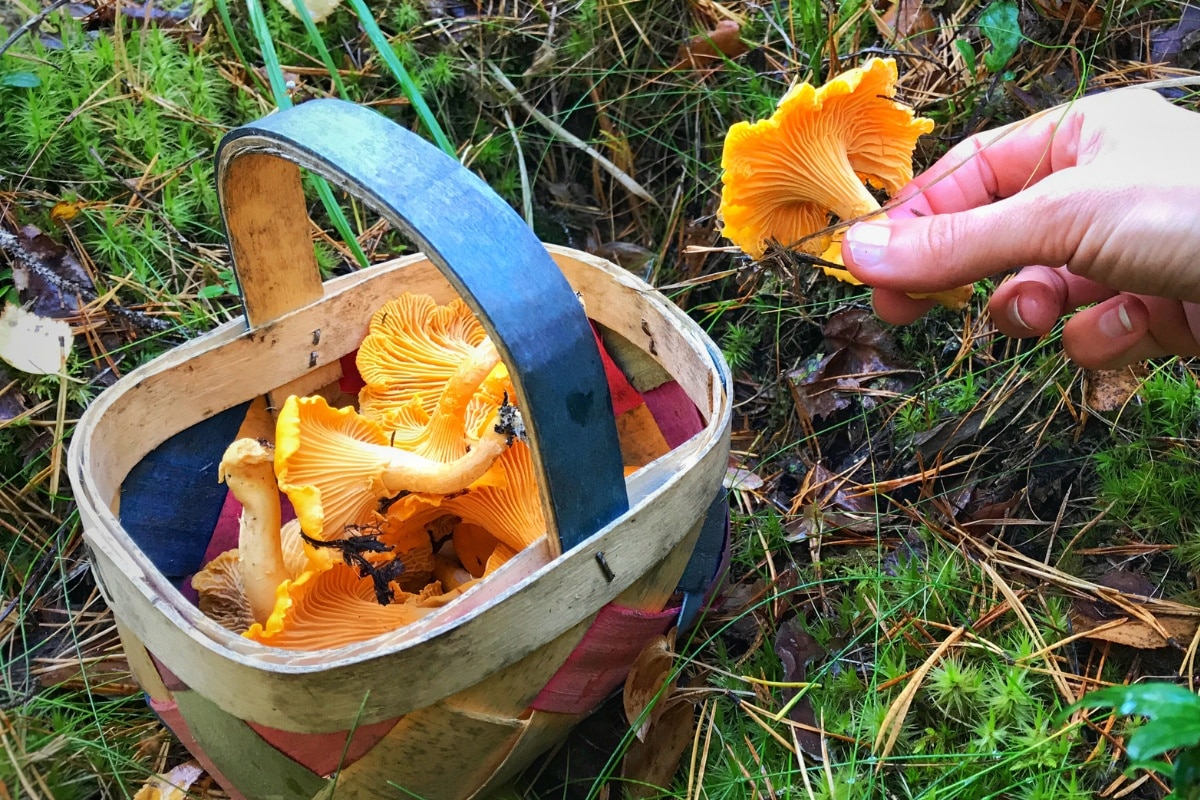
Does The Harvesting Method Impact Future Yields?
The scientific literature currently gives us a simple answer – no, the mushroom harvesting method does not significantly impact future yields from a single patch. Science doesn’t support either method as clearly better. In the end, it all comes down to personal preferences.
Research With A Grain of Salt
While all the research studies lead to the same conclusion, it doesn’t matter which way you harvest the mushrooms; it is very important to take a step back and look at the whole picture. There have only been 2 studies; that’s not a lot of research in the grand scope of things. The studies were all long-term, which is incredible and a huge wealth of information, but still, that is a small amount of data overall.
And, while the Swiss study covered a wide range of mushroom species, it certainly did not include them all. In fact, it likely covered only a small percentage of the actual number of fungi that exist in the world. The Oregon study only covered chanterelles, so it is a very limited species-wise.
Another thing to consider is location. One study was done in Switzerland and another in Oregon, North America. These sites do not by any means cover all the possible habitats and geographical variabilities for all fungi. And, these variabilities may impact how the mushrooms react when being cut or pulled during harvesting.
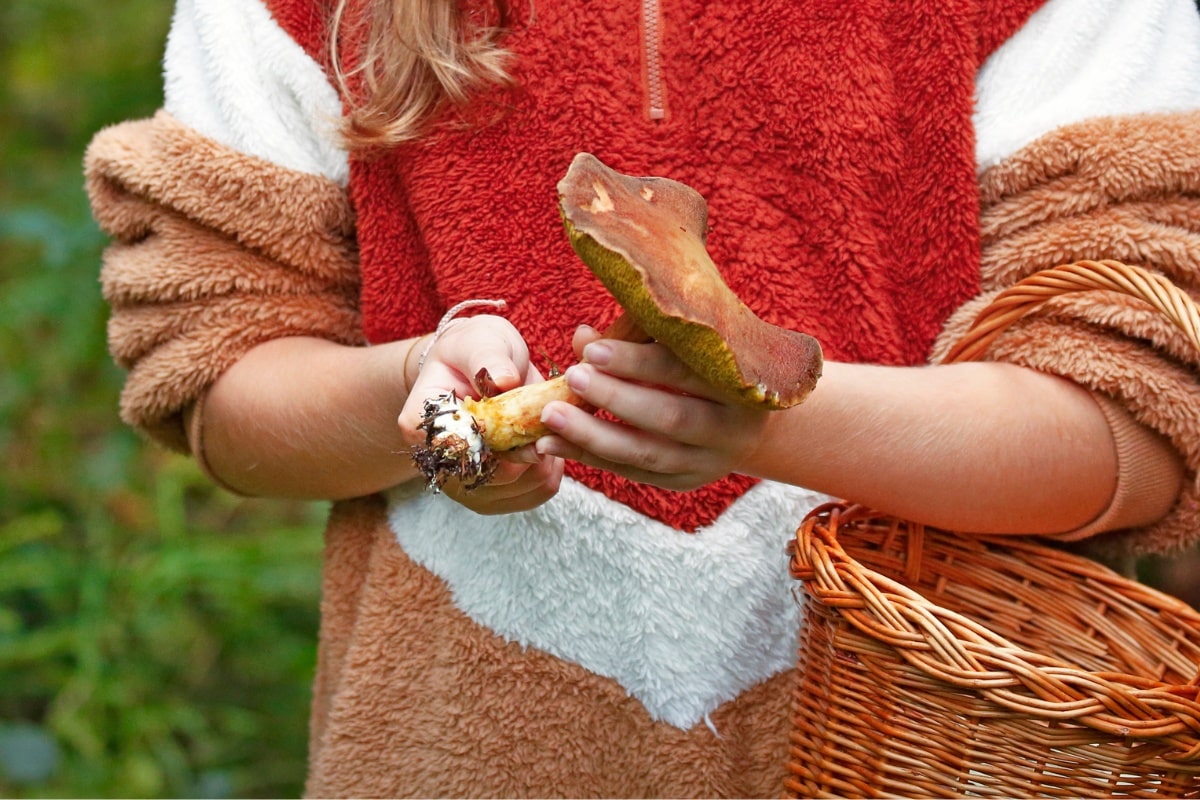
What Really Affects Mushroom Populations
While people spend a lot of time debating harvesting methods, other very important issues don’t get as much attention. Researchers have found something that affects mushroom populations a lot more than the harvesting method: foot traffic. The Swiss study showed that trampling substantially reduced the number of fruiting bodies produced.
The data suggests trampling cuts fruiting body production by about 30%. Through the ten-year study, trampled plots consistently produced fewer fruiting bodies each year. Trampling destroys mushrooms in early growth stages but barely affects the underground mycelium.
The scientific evidence shows that watching where you step matters nowhere near as much as how you harvest. It’s time to move far away from the cutting-versus-pulling debate to more influential issues like protecting the forest floor and minimizing habitat disruption.
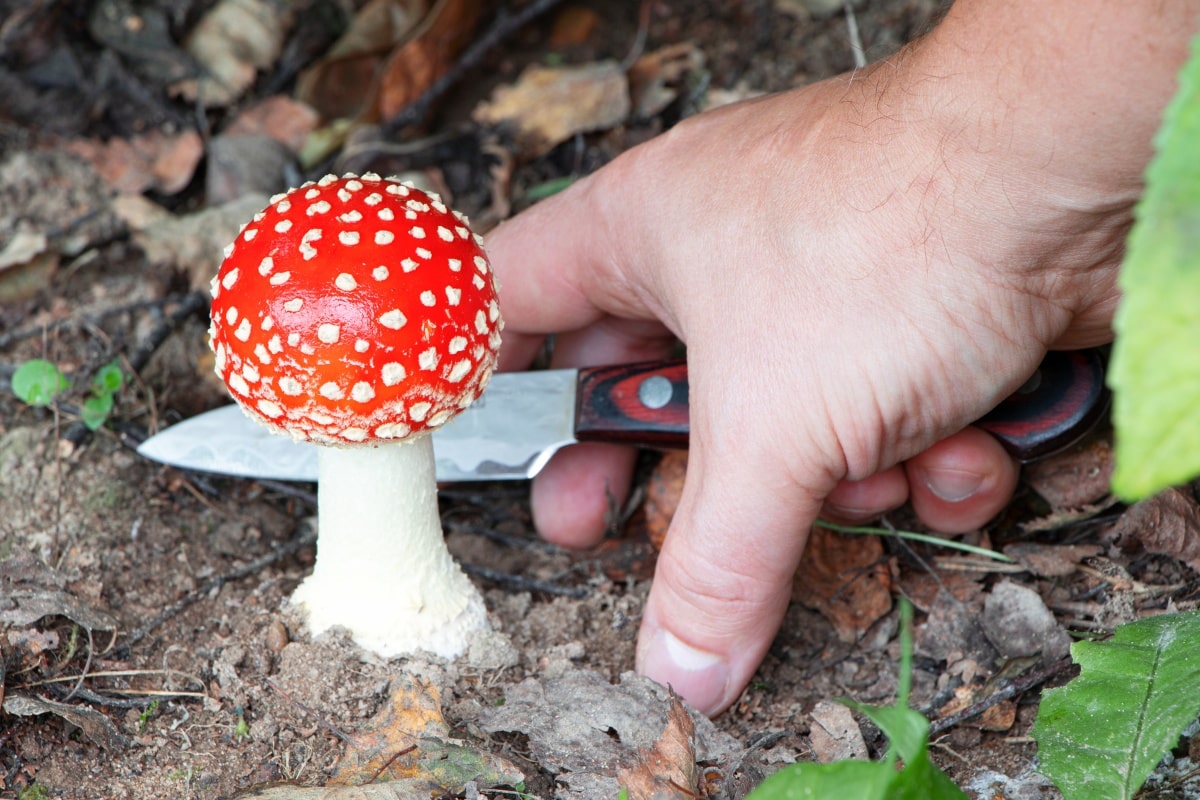
Best Practices for Picking Wild Mushrooms
The best harvesting method depends on where your mushrooms grow. There is some weight to a best mushroom harvesting method based on species. Mushrooms that grow on trees need to be cut off to protect their host. Try not to cut the tree, as this is real damage to the tree and the mycelium network within.
Mushrooms that fruit from the ground, like chanterelles and king boletes, usually come out cleanly from their mycelial web, so pulling works fine. Wood blewits and clouded agarics tend to have mycelium chunks strongly attached to their stems, which makes cutting a better choice.
It is essential to harvest sustainably, even though picking an entire patch doesn’t impact that single mycelium body. Leave half of any mushroom patch alone so they can finish their life cycle and spread spores. If all the mushrooms are picked, no spores are spread, and this reduces the chances for more patches to form in other parts of the woods.
And always remember, light steps matter. Heavy tromping, driving, or other big disruptions on the forest floor can cut fruiting body production by about 30%. Your footsteps leave a bigger mark than your picking technique.
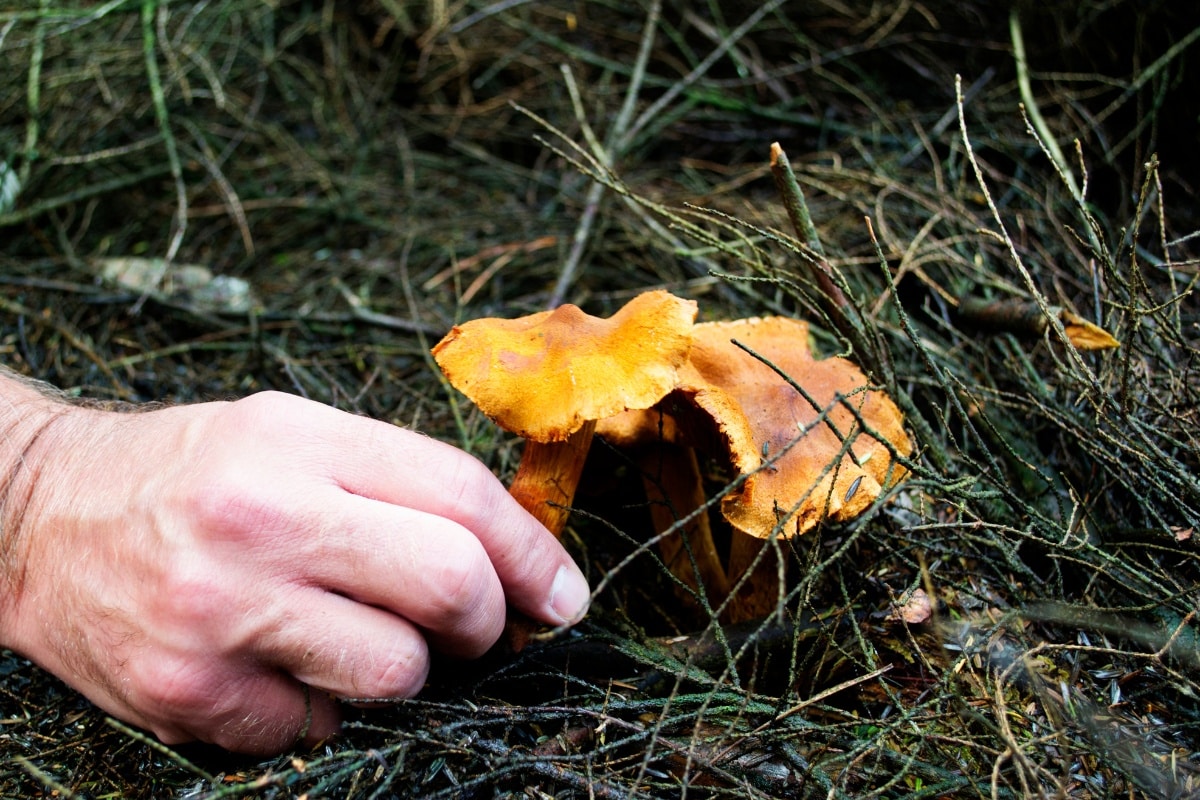
The Real Threats to Mushroom Populations
The debate about pulling versus cutting mushrooms seems minor compared to the bigger threats facing the fungi kingdom. The biggest threats to mushroom populations come from commercial over-collection, habitat loss from logging, soil damage from heavy equipment, and environmental issues like pollution and climate change.
Habitat destruction and logging
Mushrooms are disappearing worldwide as forests make way for farms and cities. This habitat loss threatens hundreds of species with extinction. Timber production and illegal logging endanger another 198 species. The situation looks particularly grim in old-growth forests.
Soil compaction and erosion
People walking and heavy equipment harm mushroom growth significantly. Research shows that trampling reduces mushroom production by about 30%. The soil becomes denser, air flow drops, and gas movement decreases. These soil changes last many years and permanently change fungal communities.
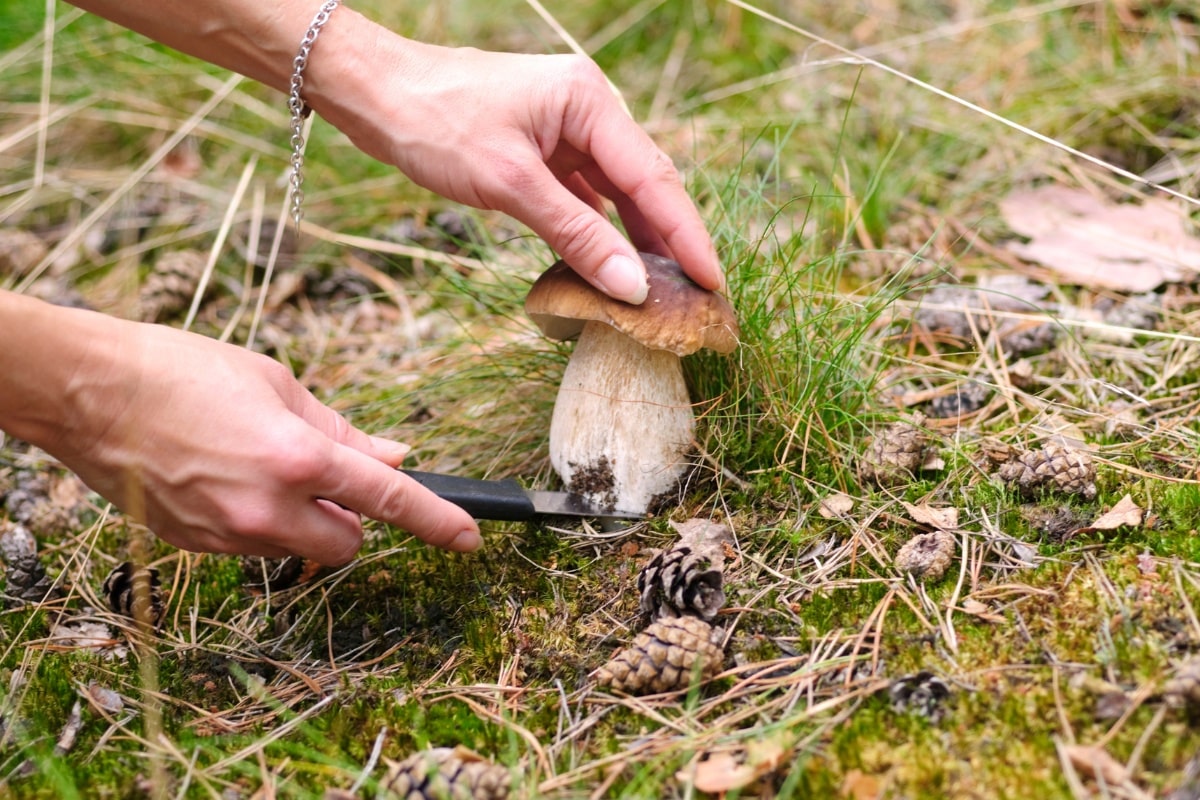
Why overharvesting is harmful
Picking too many mushrooms disrupts nature’s nutrient cycling and affects plant and animal communities. Many animals need mushrooms to survive – deer, rabbits, mice, and various insects depend on them for food. When people take too many mushrooms, these animals lose one of their food sources. Heavy harvesting puts local populations at risk, especially slow-growing or rare species.
The role of recreational vs. commercial foragers
Commercial mushroom harvesting takes tons of mushrooms worth millions from our forests. Most conservation experts agree that picking small amounts for personal use doesn’t cause problems.
Pollution and climate change
Fertilizer runoff and vehicle emissions pose a threat to 91 mushroom species. Changes in fire patterns due to climate change endanger more than 50 types of fungi. Mushrooms also absorb toxic metals from contaminated environments.
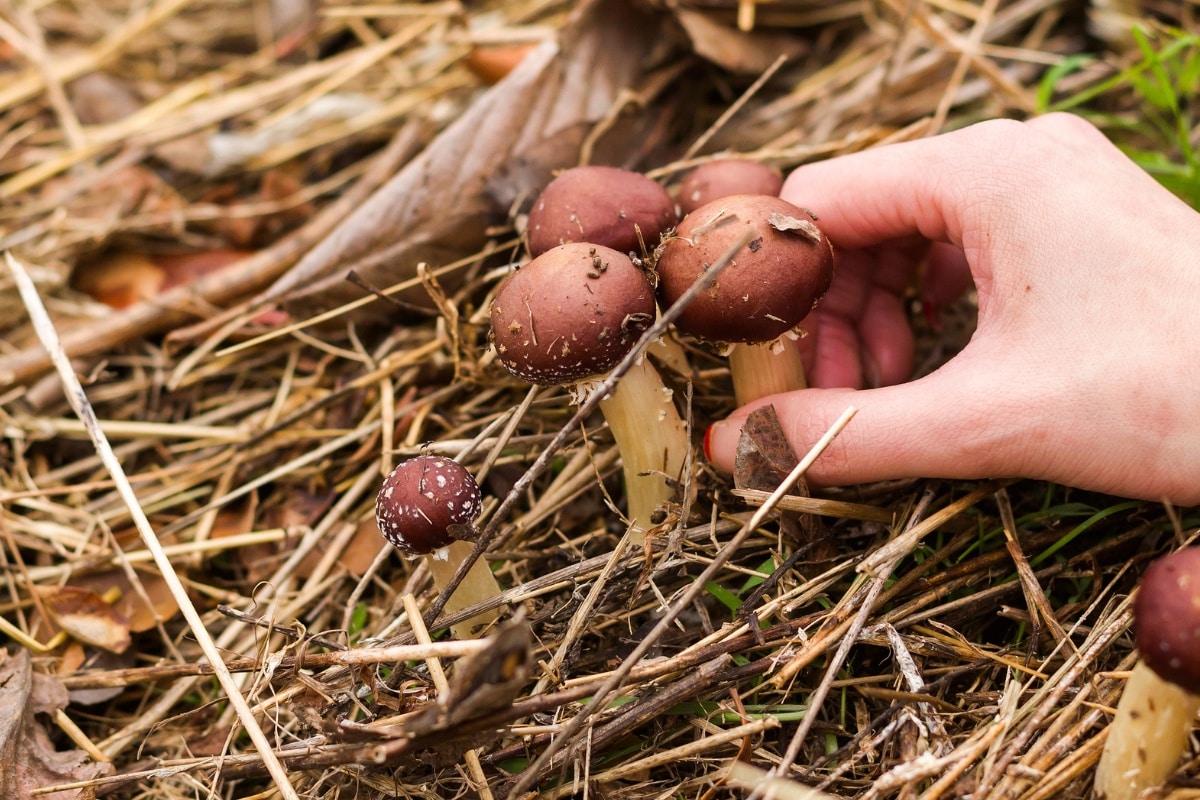
Ending The Debate (Hopefully)
The cut-versus-pull debate isn’t what we should focus on. The real threats to mushroom populations come from habitat destruction, commercial overharvesting, soil compaction, and climate change. Deforestation and changes in land use have put hundreds of mushroom species at risk of extinction.
The next time you head to the forest with your basket, pick no more than half of any mushroom patch. The forest floor works as a complex ecosystem where fungi create vast underground networks. Both harvesting methods work just as well when done responsibly without disturbing the habitat.
Mushroom harvesting doesn’t have to be contentious. Use whichever harvesting method you prefer and remember to take a deep breath and not engage in the debate. We have other more pressing issues that require our limited time and resources.
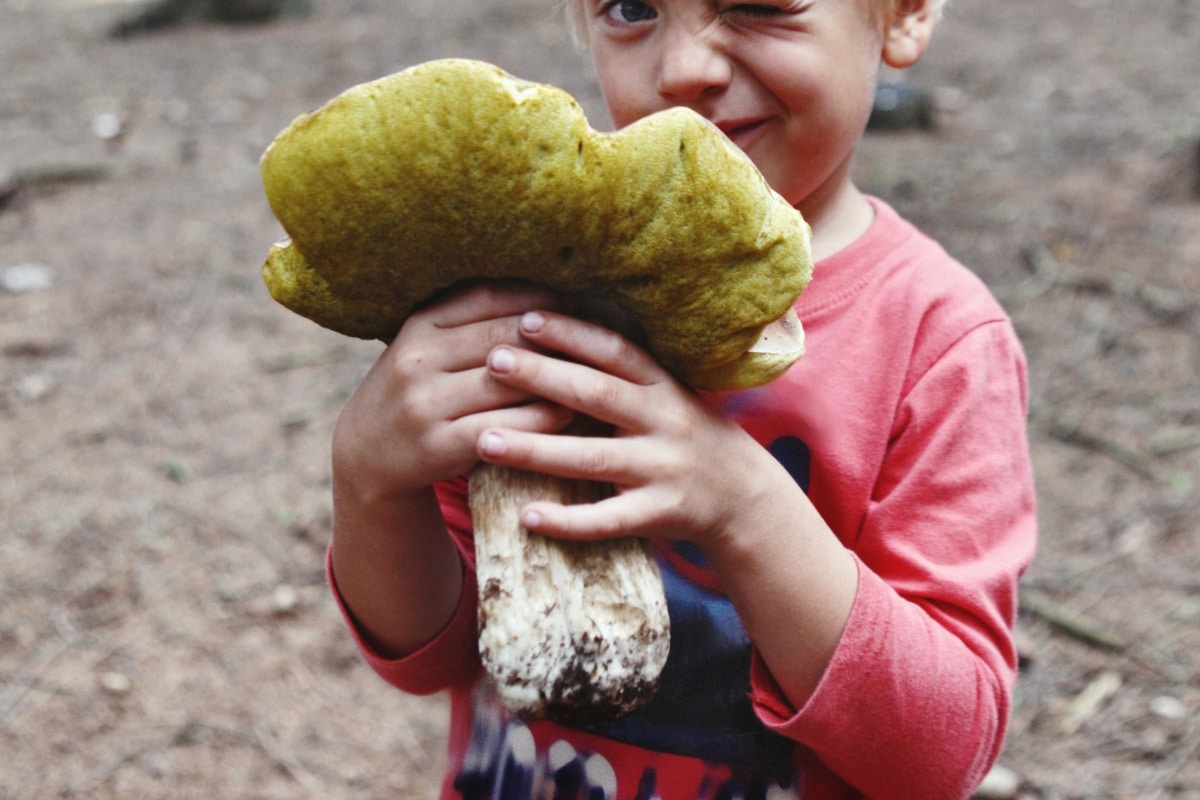
Common Questions About Mushroom Harvesting
Does it matter if I cut or pull mushrooms when foraging?
According to long-term scientific studies, the method of harvesting (cutting or pulling) doesn’t significantly impact future mushroom yields. Both techniques are equally effective and fine when done responsibly.
How can I harvest mushrooms sustainably?
First, don’t take more than half the mushrooms from any patch. Use breathable containers like woven baskets or mesh bags to spread spores through the forest as you walk. And, finally, tread lightly to minimize soil disturbance.
What’s the biggest threat to wild mushroom populations?
The greatest threats to mushroom populations are habitat destruction from deforestation and land use changes, followed by commercial overharvesting, soil compaction, pollution, and climate change.
How does trampling affect mushroom growth?
Trampling the ground excessively can significantly reduce mushroom productivity. It has shown to decrease fruiting body production by approximately 30%.

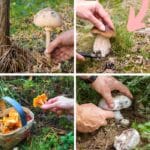
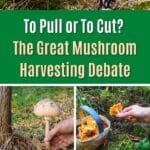




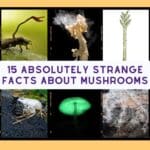
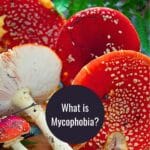
Leave a Reply